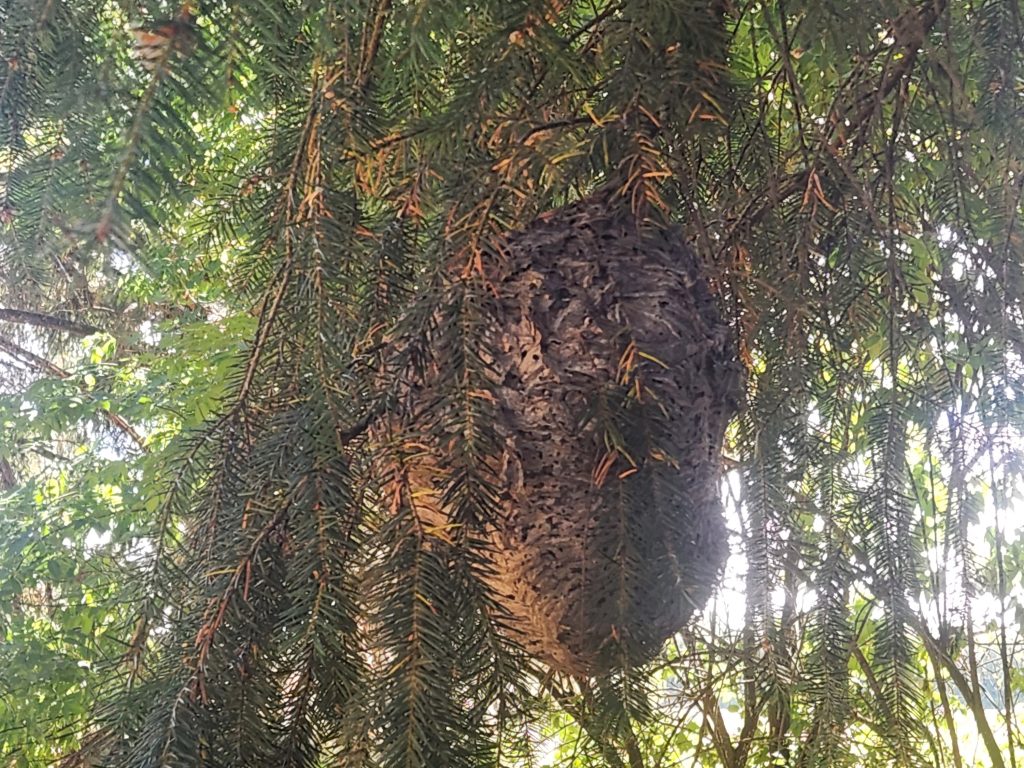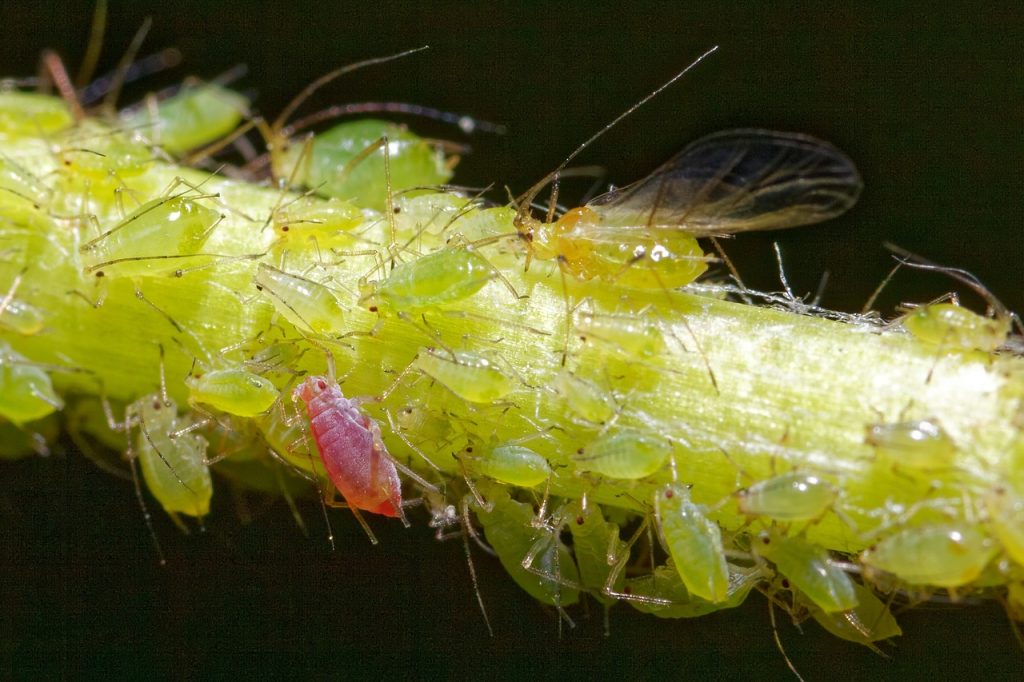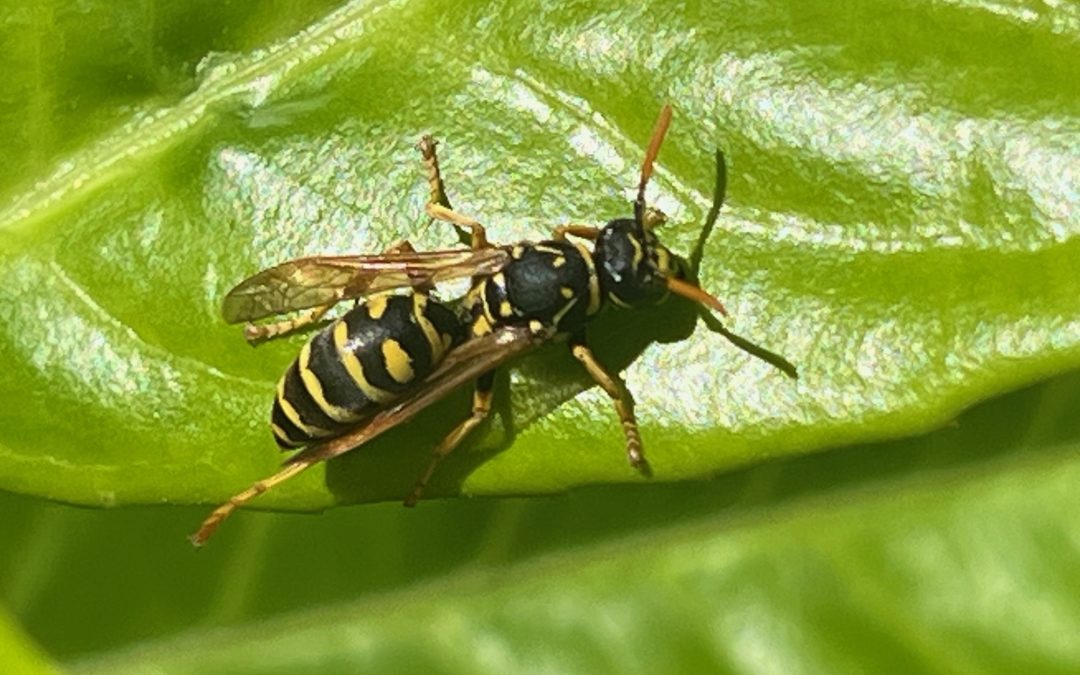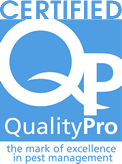Noticing more wasps and yellow jackets around your trees and shrubs lately? Before you panic about nests, there’s a surprising explanation that might be the real draw for these buzzing intruders. Let’s dive into why these pests are really swarming your plants and how you can tackle the root of the problem to reclaim your peaceful outdoor space.
This common scenario often leads to anxiety and concern, but the real reason behind these unwelcome visitors might not be what you think. Instead of a hidden nest, the presence of these stinging insects could be due to an infestation of aphids or other honeydew-producing insects on your plants. Understanding this connection can help you address the root cause and keep your yard safe and enjoyable.
What Do You Need To Know about Yellow Jackets and Wasps Swarming?
- How to tell the difference between a nests and foraging wasps/yellowjackets.
- Wasps and yellowjackets are often attracted to trees and bushes infested with aphids or other honeydew-producing insects.
- Honeydew, a sugary substance excreted by these insects, is a primary food source for wasps and yellow jackets.
- Proper identification and control of the aphid infestation can reduce the presence of these stinging pests.
- Prevention and DIY control measures can help manage the situation before it becomes a bigger problem.
- Knowing when to call a professional can save you time and stress.
Is There a Yellow Jacket or Wasps Nest Present?
Understanding the behavior of wasps and yellow jackets can be crucial in determining whether you’re dealing with a simple case of foraging or a more serious nest issue in your garden. One key observation point is their flight pattern and behavior near the trees or plants. Wasps and yellow jackets foraging on honeydew tend to have erratic, hovering flight movements as they scout for and consume the sticky substance left by aphids or other honeydew-producing insects. They may appear to land frequently, moving from leaf to leaf or along branches, attracted to the sugary deposits.
In contrast, those entering or exiting a nest display more purposeful and direct flight paths. You’ll typically see these insects flying straight to a specific point—a crack or crevice in a tree, an eave of a building, a hole in the ground, or another secluded spot—where the nest is likely hidden. The traffic to and from the nest is usually consistent, with individuals entering and exiting at regular intervals. This type of behavior suggests a nearby nest, and you might also observe individuals carrying materials for nest building or food for larvae, which further indicates the presence of a nest rather than just foraging activity.

Hidden in Plain Sight: A Camouflaged Wasp Nest in a Tree
In scenarios involving a nearby nest, you may also notice an increase in aggression among these insects. They are often more defensive and may resort to stinging to protect their territory, especially if they perceive a threat close to their nesting site. So be careful and stay clear!
Understanding the Pest at Hand: Aphids and Honeydew-Producing Insects
Aphids are small, soft-bodied insects that feed on the sap of plants. They are often found in clusters on the undersides of leaves or on new growth. As they feed, they excrete a sticky, sugary substance known as honeydew. This honeydew can attract various pests, including ants, wasps, and yellowjackets, looking for a quick and easy meal.
Other honeydew-producing insects include scale insects, whiteflies, and mealybugs. Like aphids, these pests feed on plant sap and produce honeydew, which can cover leaves, stems, and nearby surfaces, creating a sticky mess that attracts unwanted insects.
How to ID the Aphids and Other Common Plant Pests
- Aphids: Tiny (1/16 to 1/8 inch long), pear-shaped bodies. Colors vary from green to black, yellow, brown, red, or even white. They are often found in clusters.
- Scale Insects: Appear as small, immobile bumps on plant stems and leaves. Colors can range from white to brown.
- Whiteflies: Small, white, moth-like insects that flutter around when the plant is disturbed.
- Mealybugs: Soft-bodied, white, cottony insects found in leaf axils or on plant stems.
Risks of an Aphid Infestation
While the presence of wasps and yellow jackets can be alarming, when foraging, these insects rarely cause harm. The real issue lies with the aphid infestation. Aphids can cause significant damage to plants by sucking out their sap, leading to stunted growth, curled leaves, and reduced vigor. The honeydew they produce can also lead to the growth of sooty mold, a black fungus that covers leaves and reduces photosynthesis, further weakening the plant.
Signs of an Aphid Infestation
- Sticky leaves and surfaces around the plant (a sign of honeydew).
- The presence of ants, which are often attracted to honeydew.
- Clusters of small insects on the undersides of leaves or on new growth.
- Sooty mold on leaves and stems.
- Curled, yellowing, or stunted leaves.
How to Prevent Aphids so They Don’t Encourage Wasps and Yellow Jackets
- Regular Monitoring: Regularly inspect your plants for signs of aphids or other pests. Early detection can prevent a minor issue from becoming a major infestation.
- Encourage Beneficial Insects: Ladybugs, lacewings, and other predatory insects feed on aphids and can help keep their populations in check.
- Healthy Plants: Keep your plants healthy with proper watering, fertilizing, and pruning to make them less susceptible to infestations.
- Companion Planting: Some plants, like marigolds and garlic, can repel aphids and other pests.

Close-up of Aphids on a Plant Stem. Image by Kees Koertshuis courtesy of Pixabay.
DIY Control Measures for Aphids
- Water Spray: Use a strong jet of water to knock aphids off plants. This can reduce their numbers significantly.
- Insecticidal Soap: Spray affected plants with insecticidal soap, which is effective against aphids and safe for most plants. Consult your local nursery for specific products to use.
- Neem Oil: Apply neem oil to control aphids and other pests. It also acts as a repellent. Again, you should talk with the experts at your local nursery before making any application.
- Homemade Remedies: Mix a few drops of dish soap in water and spray on the infested plants.
When/Why to Use a Professional
If your DIY efforts are not enough to control the infestation or if you have a large, severe infestation, it may be time to call in a professional. Pest control experts can sometimes help identify the problem at hand and might be able to help with a treatment. If there is actually a wasp nest present, the professional can help eliminate that as well.
By understanding the connection between aphids, honeydew, and the presence of wasps and yellowjackets, you can take proactive steps to address the underlying issue and keep your yard safe and pest-free. With regular monitoring, proper plant care, and the right control measures, you can enjoy your outdoor space without the worry of stinging insects.
~ Adam Hiddelson



